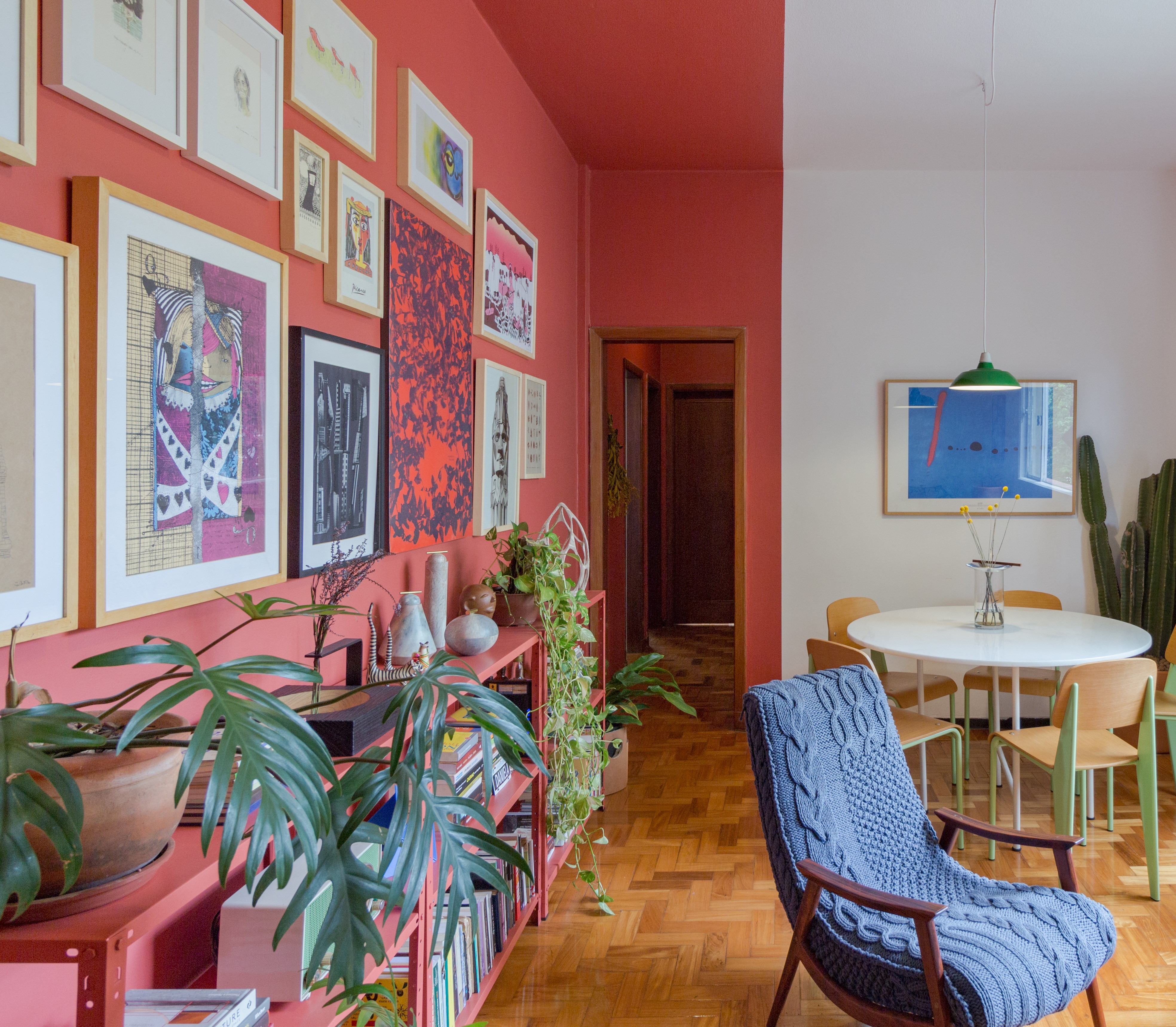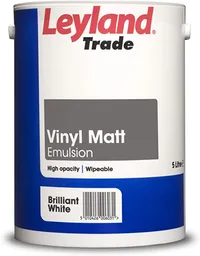I always use trade paint when decorating my home and here are 5 reasons why
When decorating, I want to make sure I have the most best finish possible. Trade paint in the answer


If you're a design enthusiast like me, there's nothing you'll love more than experimenting with a new paint idea. The colors we use in our homes have a wonderous ability to alter our entire interior, and for that reason, only the best paint is fit for the job. That's why I always use trade paint, and here's why I think you should, too.
My Grandad always told me that if you want a job done properly, quality matters. Too often, we sacrifice it just to save a few pennies but in doing so, we do ourselves a huge disservice. In the world of design especially, good quality furniture, tools and materials are an investment that will likely save you money in the long term.
When it comes to decorating, a high grade paint can be the difference between a bubby or uneven paint job and a smooth, professional looking finish. Trade paint, as opposed to retail paint, is a reputable paint designed especially for professional decorators. That's why it's the best option if you want a job to be done to the highest standard. Here's why I use it, and hopefully it might encourage you to do so, too.

Lilith is an expert at following news and trends across the world of interior design. She's committed to helping readers make the best choices in their homes through sharing practical tips and guides that make home renovation simple. For this piece, she shares her experience of using trade paint and why she thinks it's the best choice for the job.
1. Trade paints are better quality

The first point is an obvious one, but it deserves mention nonetheless. Trade paints are simply a higher standard than retail paints which makes life far easier when painting a room. They have a better opacity in comparison which means a single coat will look more bright and polished than a single coat of retail paint would. This typically makes their coating more durable, too.
'Of course there are high quality retail paints but this varies based on the price,' says Michael Rolland, DIY expert and MD of The Paint Shed. 'Trade paint as a standard is made to a higher quality. As they are predominantly used by professionals, they are consistently tested to ensure they are providing the expert finish expected by professional decorators and their customers.'
This is something I've certainly noticed since using trade paints. No matter how much prep work I put in, retail paints just wouldn't offer a perfect coverage, often resulting in an uneven finish. Trade paint looks far more even, and there's no noticeable texture on my walls either.
Leyland Trade Vinyl Matt Paint Brilliant White 5L, from Amazon
For a tough, durable and long-lasting finish, look to Leyland's trade paint range. It has a high opacity that will help your paint go further and it's easily wipeable, making it perfect messy family areas like the kitchen. It's amazing value, too - this 5 litre tin works out as only $17 dollars a litre!
2. Trade paints go further
When money's tight, we often wonder how to make paint go further. Retail paints often come in 2.5 litre cans as standard which often leads us to buy more than we need to paint a room. Or, conversely, we desperately try not let any paint go to waste to try and cover a wider surface area.
The Livingetc newsletters are your inside source for what’s shaping interiors now - and what’s next. Discover trend forecasts, smart style ideas, and curated shopping inspiration that brings design to life. Subscribe today and stay ahead of the curve.
Trade paint cuts out that issue. 'If your project involves covering a wide surface area, such as an entire room, then instead of risking several tins of paint which may have a varied final shade due being from different batches, opt for a trade paint in the desired shade,' says Michael. 'Trade paint offers a higher pigmentation which means the paint will go further and reduce the need for multiple purchases.'
As mentioned, the higher opacity of trade paints also means that one coat will cover a wider surface without any of the previous surface color bleed through.
3. They're more economical

Trade paints are also far more economical than retail paint. This isn't to say they're cheaper - a tin of Dulux trade paint will typically cost at least a third more than its retail counterpart - but since they go further, it's an investment worth making.
Before using trade paint, I'd often find myself calculating how much paint I needed for a room, sometimes buying different sized cans so that I wasn't wasting money on unnecessary paint. I haven't found a need to do this with trade paint. I don't need to use as much paint as I used to, and the size range usually goes a lot higher too.
'Depending on brand, trade paint can carry a higher purchase cost than retail paint, but you will actually require less of it due to the higher pigmentation,' Michael explains. 'Less coats means less paint, which results in less money being spent. There's also the added benefit of less energy and time being used for painting.'
4. Trade paints offer the right finish for every project

I used to admire the array of colors that retail paint brands offered, but I'd fall in love with a trending color only to find that it came in limited paint finishes. In fact, it was the difficulty I faced trying to find the right color gloss for my woodwork that led me to discover trade paint. Since they're developed for professional jobs, they come in every type of paint finish you'd need.
As Michael notes: 'Whereas with retail you may need to switch brands depending on the job type being interior or exterior, many trade brands offer a paint for all finishes.'
For example, Dulux Trade has undercoat, weathershield for exterior projects, typical interior finishes such as emulsion and eggshell, gloss, varnish, metal paint and more, all under the one brand. 'This means that there will be no variation in quality,' says Michael. It also saves you the hassle I experienced of color matching your favorite shade from a different brand when you discover they don't do gloss!
5. They last longer

When it comes to how often you should paint your walls, you can expect to redecorate every five to 10 years if you've used retail paint. However, since trade paints are far more durable, they'll last much longer.
'The high-quality formula of trade paints almost always comes with a considerably higher life expectancy, and this accounts for regular cleaning too,' says Michael. 'This means less need for touch ups and potential paint matching disasters ruining the finish of your walls or projects.'
Should I use trade paint?
If you're still debating whether trade paint is the best option for you, try a tester and see if you notice a difference. What's often misunderstood is that trade paint is actually widely accessible, and some of the best known brands on the market, such as Dulux, Zinsserand Valspar, offer their own range.
In general though, trade paint is only necessary if you're painting a large area. There's no need to splash out on the professional standard if you're only painting a piece of furniture. As Michael notes: 'If you have a smaller project such as an accent wall, choosing a designer retail paint such as those from Farrow and Ball or Little Greene will be your best option.'

Lilith Hudson is a freelance writer and regular contributor to Livingetc. She holds an MA in Magazine Journalism from City, University of London, and has written for various titles including Homes & Gardens, House Beautiful, Advnture, the Saturday Times Magazine, Evening Standard, DJ Mag, Metro, and The Simple Things Magazine.
Prior to going freelance, Lilith was the News and Trends Editor at Livingetc. It was a role that helped her develop a keen eye for spotting all the latest micro-trends, interior hacks, and viral decor must-haves you need in your home. With a constant ear to the ground on the design scene, she's ahead of the curve when it comes to the latest color that's sweeping interiors or the hot new style to decorate our homes.
